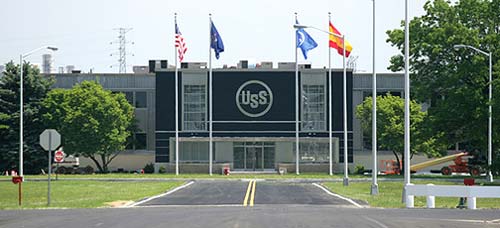sset disposition is hardly a plum assignment at most corporate real estate organizations, especially industrial ones. A new coat of paint on the front door does little to make industrial assets more attractive to potential buyers, and most corporations are loathe to spend money on the paint in the first place. So sites are unloaded expeditiously, when possible, at the best rate the market can muster. And the real estate manager moves on to a more desirable task.
But at U.S. Steel, that is not the approach in use, and it won’t be as long as Garrett Hurley is president of USS Real Estate, the Pittsburgh-based steel giant’s real estate unit. In his view, assets to be disposed of are opportunities. They are opportunities to deliver significant returns to the bottom line and to turn an eyesore into a destination, in many cases.
“Our mandate is to try to sell the assets at the best value, recognizing the time value of money,” says Hurley. “We don’t want to completely hold the assets, but at the same time, we don’t want to unload them at a fire sale. We are challenging our people not to think that the only way we can do things is the way we did them in the past.” The real estate unit’s modus operandi had typically been to sell property and turn it over to private developers, residential or commercial, depending on the location. Hurley holds the view that in some cases, it may be more profitable in the long run for U.S. Steel to develop the property itself.
U.S. Steel assets ripe for disposition typically are sites where steel mills operated in the past, or they’re large tracts of land gained through company acquisitions. For example, the company is one of the largest landholders in Alabama – 200,000 acres (81,000 hectares) – thanks to its 1907 acquisition of Tennessee Iron & Coal, which owned extensive land holdings in the state for iron and coal mining. Former plant sites on the disposition list include a lake-front property in Chicago and a still-active site in Bucks County, Pa., on the Delaware River (see the case study).
“In the case of Chicago, we have an agreement with a group of investors to sell the land at the plant site, which should close some time this year,” says Hurley. “We did that deal when times were a little tougher, and we could probably get more value out of it if we developed it ourselves. But we’ll live up to the agreement.” The new owners plan a mixed-use development at the 500-acre (202-hectare) site. U.S. Steel plans to donate some of the land to the City of Chicago for use as a public park.
In Maryland, U.S. Steel Real Estate is developing a 1,200-acre (486-hectare) site for residential use.

|
| U.S. Steel’s 2,400-acre (972-hectare) Fairless Works site in Bucks County, Pa., is just one example of the company’s large land holdings, which include some 200,000 acres (80,940 hectares) in Alabama alone.
PHOTO CREDIT: |
It built a golf course community that is undergoing improvements, including construction of a wastewater treatment plant that will make more lots available for sale.
Of the 200,000 acres (80,940 hectares) in Alabama, the real estate unit controls 75,000 (30,375 hectares), much of which is in or near the rapidly growing suburban Birmingham area. It has developed two residential communities in Hoover and is working on a third with the Retirement Systems of Alabama, a leading institutional investor.
“We have done some commercial development, but probably not enough,” says Hurley. “In my opinion, we haven’t pushed the commercial side of the business as much. But we’re looking at different ways of approaching that, because we have such large land holdings.”
Prior to running U.S. Steel’s real estate division, Hurley held other positions at the company that involved disposing of business units and other assets that were not central to the business of steel manufacturing. “When the job in real estate came open, it was a natural extension of what I had been doing,” he relates.
Hurley realizes he took over the real estate business as the steel industry was rebounding. Previously, assets were sold in large part to maintain a healthy balance sheet. Today, the motivation to shed assets is different. “The steel business has done well, which allows us to look at our portfolio and not just seek the highest dollars right away, but rather seek the best way to develop a site.”
The boom in the steel business has also freed up more capital with which to prepare sites for sale or development, notes Hurley. “Three years ago, we had a minuscule capital budget and spent very little of it because the need for that capital was so great in the steel business. Now, we doubled our capital budget last year and doubled it again this year. With that money, we can buy property, and we can prepare it for sale or lease. Because we make money, we can spend it. But we’re never frivolous in our spending, because we recognize we are part of a steel plant, and the steel industry must continue to cut costs.”

